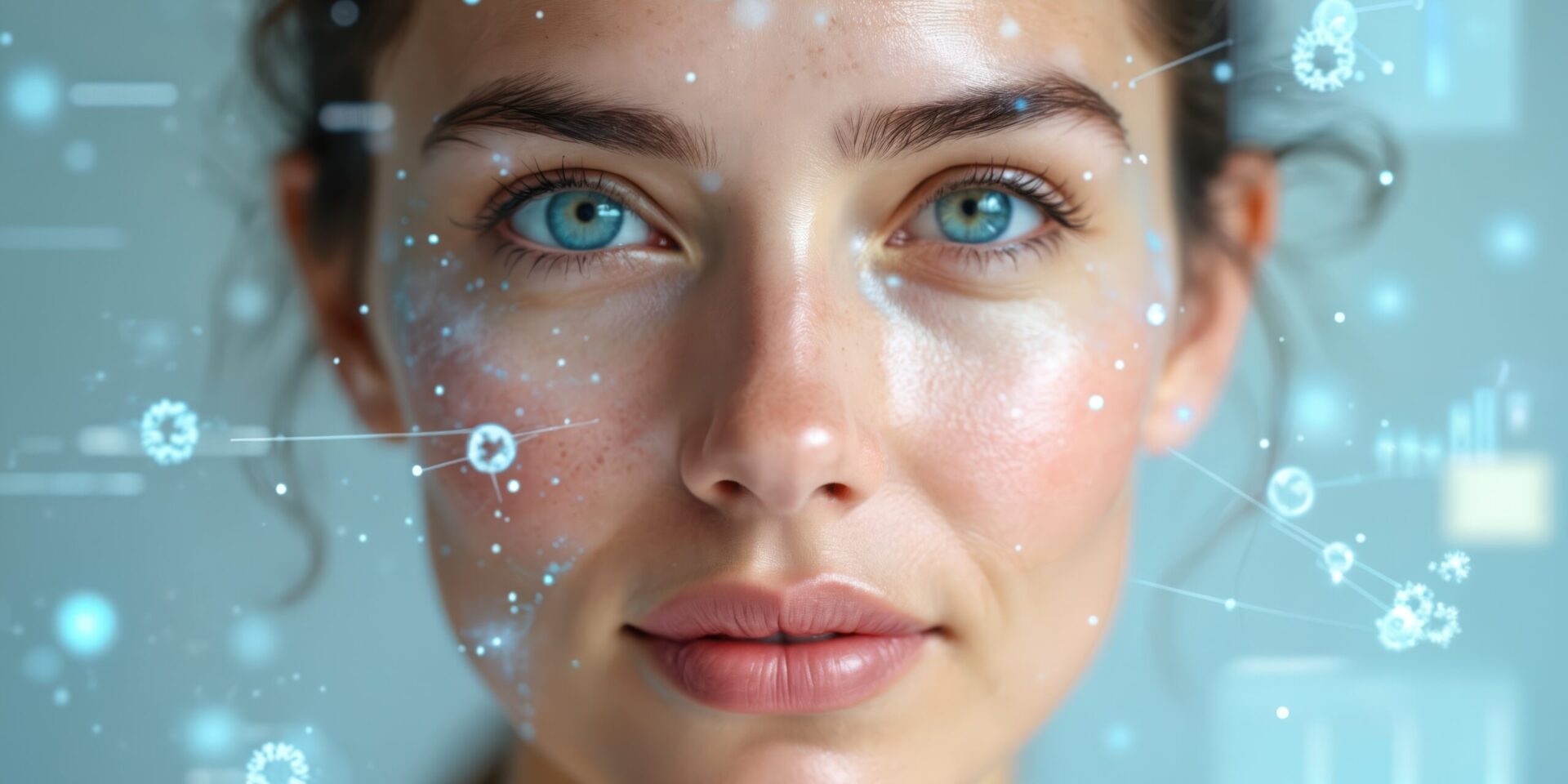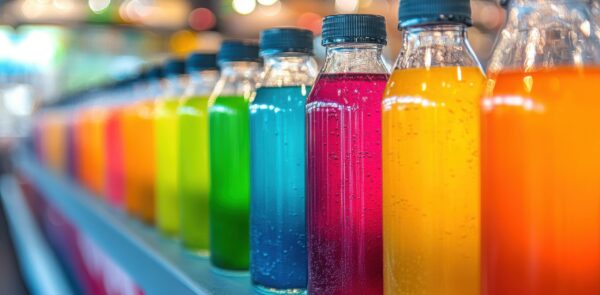
Jump to a section:
The global beauty industry stands at a transformative crossroads as it approaches 2026. Valued at $450 billion in 2025 and projected to reach $556 billion by 2032, the sector is experiencing fundamental shifts in consumer behavior, technological integration, and value perception. For beauty CMOs and marketing leaders, understanding these emerging trends is crucial for navigating an increasingly complex landscape where traditional approaches to product development, marketing, and consumer engagement are being redefined by digital natives, sustainability consciousness, and personalization demands.
The Market Landscape
The beauty industry is experiencing a recalibration phase as post-pandemic growth normalizes and consumer priorities shift. After experiencing 7% annual growth from 2022-2024, the industry is settling into a more sustainable 5% growth trajectory through 2030. However, this moderation masks significant underlying changes: brand loyalty has dropped 20% in two years, with consumers increasingly gravitating toward niche, independent brands that grew 6.9% compared to just 2.2% for top-10 legacy brands.
Geographic expansion opportunities are concentrated in India and the Middle East, where 70% of executives anticipate high growth, while 51% plan to prioritize North American market expansion. The digital transformation continues accelerating, with over 30% global e-commerce penetration projected by 2030, driven by social commerce integration and virtual try-on technologies.
Science-Driven Efficacy and Dermocosmetics Revolution
The era of marketing hype is giving way to clinical validation and transparent formulation science. Consumer demand for proven results is driving the explosive growth of dermocosmetics, with the market expected to reach $146.4 billion by 2032. This shift reflects a more educated consumer base that scrutinizes ingredient lists, seeks clinical studies, and prioritizes long-term skin health over quick cosmetic fixes.
Brands are responding by investing in dermatologist partnerships, publishing detailed concentration levels, and conducting clinical trials to support their claims. This trend extends beyond skincare into color cosmetics, where hybrid formulations combine aesthetic benefits with active ingredients. The success of brands like CeraVe and emerging players like Deconstruct demonstrates that science-backed positioning can capture significant market share from traditional beauty giants.
- Clinical Validation Requirements: Consumers demand peer-reviewed studies, dermatologist endorsements, and transparent efficacy data.
- Ingredient Transparency: Detailed formulation information, concentration levels, and sourcing transparency become competitive advantages.
- Expert-Led Branding: Dermatologist-founded and scientifically-credentialed brands gain consumer trust and market share.
- Hybrid Functionality: Products that combine cosmetic benefits with proven skincare actives dominate innovation pipelines.
| Market Segment | 2026 Value Projection | Key Growth Drivers | Consumer Expectations |
|---|---|---|---|
| Dermocosmetics | $146.4 billion by 2032 | Clinical validation, expert credentials | Proven efficacy, safety data |
| Personalized Beauty | $48.65 billion by 2030 | AI analysis, custom formulations | Individual skin assessment, tailored products |
| Natural & Organic | $95.7 billion by 2035 | Sustainability consciousness, clean ingredients | Transparent sourcing, environmental responsibility |
| Men’s Beauty | $169 billion by 2034 | Expanding beyond grooming, skincare adoption | Gender-specific formulations, performance focus |
“The beauty industry is witnessing a fundamental shift from aspiration-based marketing to evidence-based positioning. Consumers no longer accept marketing claims at face value—they demand clinical proof, transparent formulations, and measurable results. Brands that embrace this scientific rigor while maintaining emotional connection will dominate the next decade of beauty commerce.” – LinchpinSEO Strategy Team
AI-Powered Personalization and Virtual Beauty Experiences
Artificial intelligence is revolutionizing how beauty brands interact with consumers, moving beyond simple product recommendations to comprehensive skin analysis and personalized formulation. The personalized beauty market is projected to reach $48.65 billion by 2030, driven by AI-powered tools that can analyze individual skin conditions, lifestyle factors, and preferences to create truly customized solutions.
Virtual beauty experiences are becoming mainstream, with the virtual beauty market forecasted to reach $2.59 billion by 2029. Augmented reality try-on tools, AI-powered skin diagnostics, and virtual consultations are transforming the customer journey from discovery to purchase. Brands are integrating these technologies not just for e-commerce enhancement but as core differentiators that provide value beyond traditional product offerings.
- Skin Analysis Technology: AI-powered diagnostics that assess skin conditions, concerns, and compatibility with specific formulations.
- Custom Formulation: Algorithms that create personalized products based on individual skin profiles and lifestyle factors.
- Virtual Try-On Evolution: Advanced AR that accurately simulates how products will appear on individual skin tones and facial features.
- Predictive Beauty: AI systems that anticipate skin changes and recommend proactive product adjustments.
The Social Commerce Revolution
Social media platforms have evolved from discovery channels to complete shopping ecosystems, fundamentally changing how beauty brands approach marketing and sales. TikTok, Instagram, and emerging platforms now drive not just awareness but direct conversions, with social commerce becoming a primary sales channel rather than a secondary touchpoint.
The success of social commerce in beauty reflects the visual nature of the category and the influence-driven purchasing behavior of younger consumers. Brands are reallocating marketing budgets from traditional advertising to influencer partnerships, live shopping events, and platform-native content creation. This shift requires new competencies in content creation, influencer relationship management, and real-time customer engagement across multiple platforms simultaneously.
- Platform-Native Commerce: Direct purchase integration within social media platforms eliminates friction between discovery and transaction.
- Influencer Partnership Evolution: Long-term brand partnerships replace one-off sponsored content for authentic audience engagement.
- Live Shopping Integration: Real-time product demonstrations and Q&A sessions drive immediate purchasing decisions.
- User-Generated Content Amplification: Customer reviews and authentic usage content become primary marketing assets.
“Social commerce represents more than a new sales channel—it’s a complete reimagining of the customer journey. Traditional marketing funnels are being replaced by social discovery loops where content consumption, peer validation, and purchase decisions happen within the same platform ecosystem. Beauty brands that master this integration will capture disproportionate share of the next generation of consumers.” – LinchpinSEO Strategy Team
Sustainability as Core Business Strategy
Environmental consciousness has evolved from a niche concern to a mainstream expectation, with 55% of consumers willing to pay premium prices for environmentally-friendly beauty products. The natural and organic cosmetics market is projected to reach $95.7 billion by 2035, but sustainability expectations now extend far beyond ingredient sourcing to encompass packaging innovation, supply chain transparency, and circular economy principles.
Brands are implementing comprehensive sustainability strategies that include refillable packaging systems, carbon-neutral shipping, and closed-loop ingredient sourcing. Biotech innovations are enabling lab-grown ingredients that reduce environmental impact while maintaining or improving efficacy. This trend requires significant operational changes and long-term strategic planning rather than superficial green marketing initiatives.
- Circular Packaging Design: Refillable containers, biodegradable materials, and take-back programs that eliminate waste.
- Supply Chain Transparency: Complete ingredient traceability and ethical sourcing verification throughout the production process.
- Biotechnology Integration: Lab-grown ingredients that replicate natural benefits without environmental extraction.
- Carbon Footprint Management: Comprehensive lifecycle assessments and carbon offset programs across all operations.
The Expansion of Men’s Beauty and Inclusive Marketing
The men’s beauty market is experiencing unprecedented expansion, projected to reach $169 billion by 2034 as men increasingly adopt comprehensive skincare routines and experiment with color cosmetics. This growth reflects changing masculine identity concepts and the normalization of self-care practices across gender lines. Brands are developing gender-specific formulations while also embracing gender-neutral positioning to capture this expanding market.
Inclusive marketing has become both an ethical imperative and a business necessity, with 72% of consumers preferring brands that reflect diverse values. The success of Fenty Beauty’s 50-shade foundation range, which generated $600 million in revenue, demonstrates that inclusive product development drives significant commercial returns. Brands are expanding representation across ethnicity, age, gender identity, and body types while ensuring product formulations serve diverse consumer needs effectively.
- Male Skincare Sophistication: Advanced formulations addressing men-specific concerns like shaving irritation, oiliness control, and anti-aging.
- Gender-Neutral Positioning: Product marketing and packaging that appeals across gender spectrums without alienating traditional consumers.
- Diverse Shade Ranges: Comprehensive color matching across all skin tones becomes standard rather than exceptional.
- Authentic Representation: Marketing campaigns featuring genuine diversity rather than tokenistic inclusion initiatives.
Data Table: Key Trends and Strategic Action Items
| Key Trend | Strategic Action Item |
|---|---|
| Science-driven efficacy demand increasing | Invest in clinical testing, dermatologist partnerships, and transparent ingredient communication |
| AI personalization becoming mainstream | Develop skin analysis tools and custom formulation capabilities |
| Social commerce driving direct sales | Build platform-native shopping experiences and influencer partnership programs |
| Sustainability expectations expanding | Implement circular packaging systems and supply chain transparency initiatives |
| Men’s beauty market growing 15% annually | Develop male-specific formulations and gender-inclusive marketing strategies |
Conclusion
The beauty and cosmetics industry entering 2026 represents a sector in profound transformation, where traditional marketing approaches must evolve to meet increasingly sophisticated consumer expectations. Success will require integrating scientific rigor with emotional engagement, leveraging AI-powered personalization while maintaining human connection, and building authentic brand relationships through social commerce platforms. Companies that embrace these changes while maintaining focus on genuine value creation will emerge as leaders in the next phase of beauty industry evolution.
The Linchpin team helps beauty brands navigate these complex market dynamics by developing integrated marketing strategies that balance innovation adoption with consumer trust building. We work with beauty companies to implement science-based positioning, social commerce optimization, and sustainability communications that drive both brand differentiation and measurable business results in the evolving beauty landscape.
If you need help with beauty industry marketing strategy, contact the Linchpin team today. We can help you develop comprehensive approaches that leverage emerging trends while building sustainable competitive advantages in the dynamic beauty marketplace.


